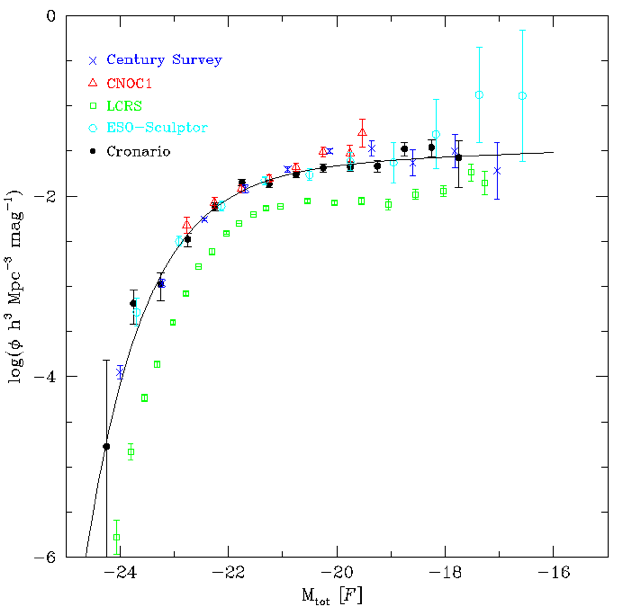The Luminosity Function of clusters of galaxies
Short description:
We studied the dependence of the Luminosity Function of clusters of galaxies from redshift, Bautz-Morgan type, presence of a dominant galaxy, type of magnitude employed (total or isophotal) and density of the environment employing the PNSC catalogs produced in Naples, based on the data of the of the "Digital Palomar Observatory Sky Survey".
Here I present the results based on a sample of 39 clusters: galaxy counts in field and clusters, cumulative LF, comparison with previous results.
This work has been published in A&A. A copy of the article can be found within my publications.
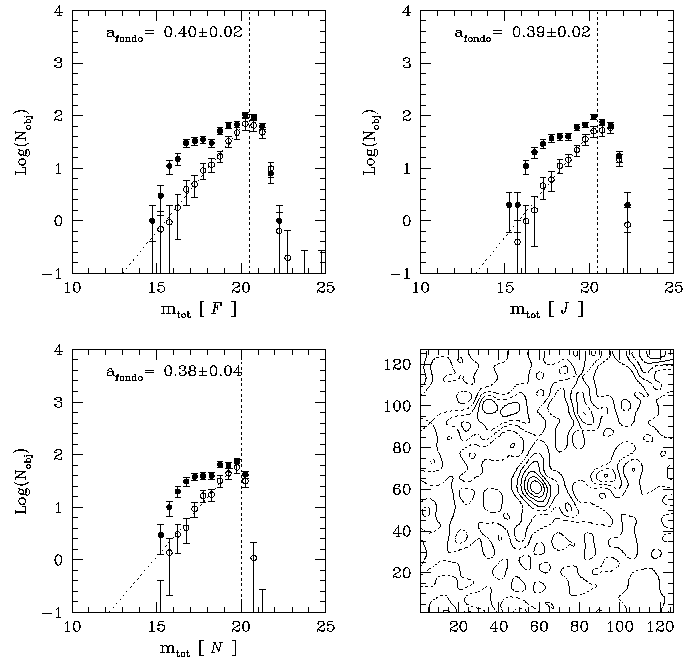
-
•Comparison of our field counts against some previous works. The filled circles are obtained from the cluster sourrounding regions, while open squares are obtained from an empty field.
-
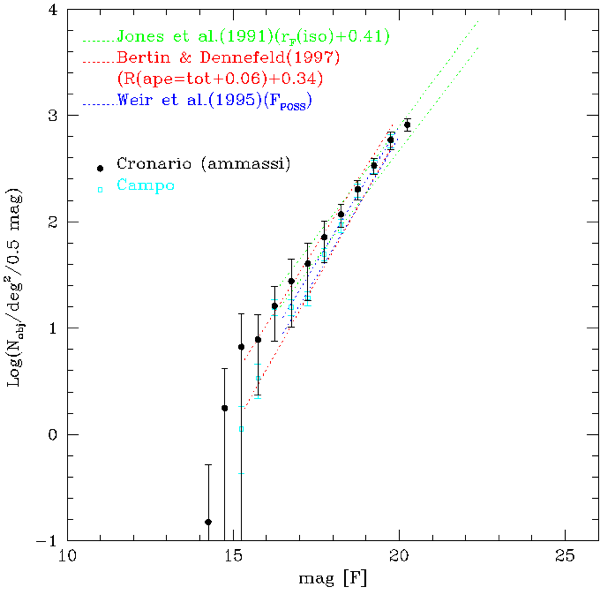
•Cumulative luminosity function of 24 Abell clusters with the best-fit Schechter function. The two simbol represent the LF including (open circles) or excluding (filled circles) the Brightest Cluster Member.
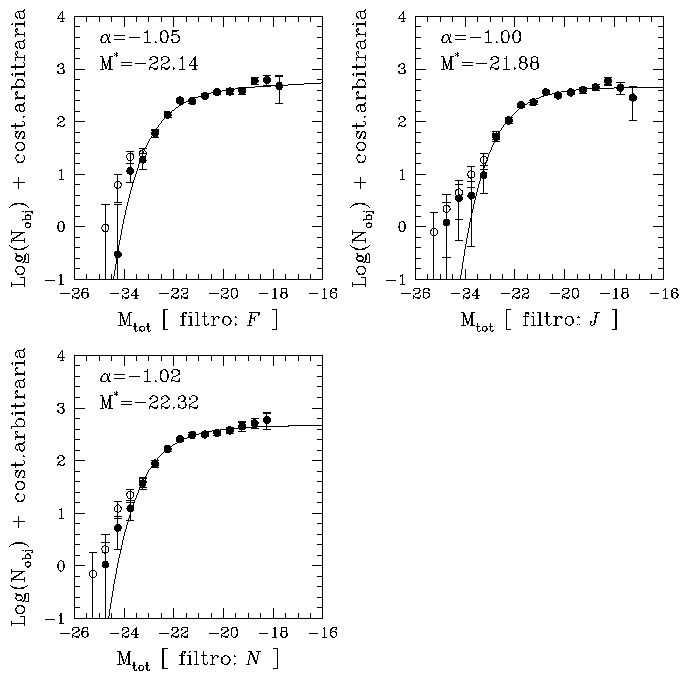
•Comparison of our cumulative LF with Lugger (1983) and Garilli et al. (1999) data.
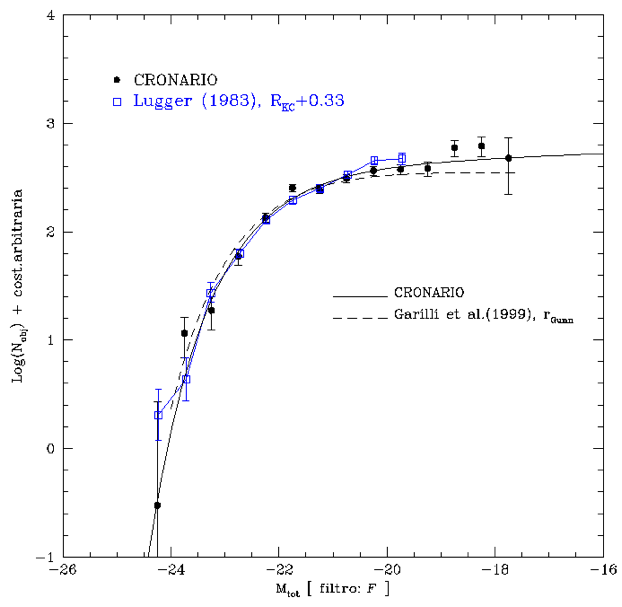
-
•Comparison of our cumulative function with Colless (1989) data.
-

•Comparison of our cumulative LF with the LF of field galaxies. The line represent the best-fit Schechter function to our data.
